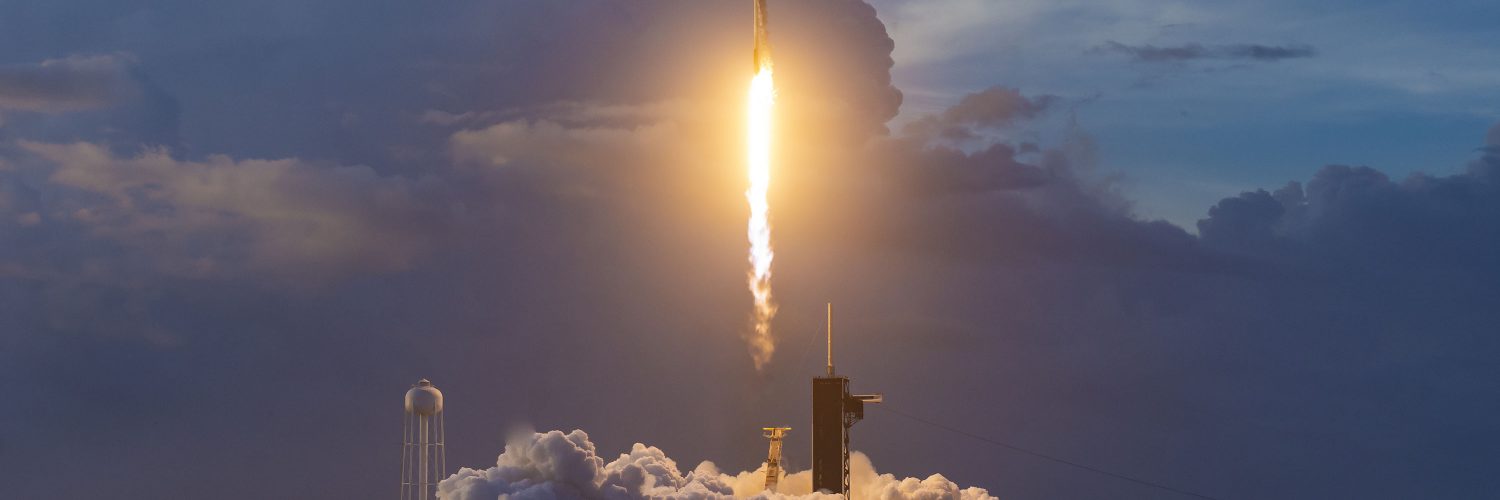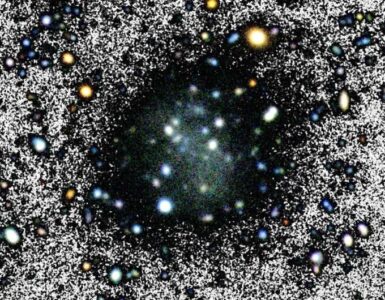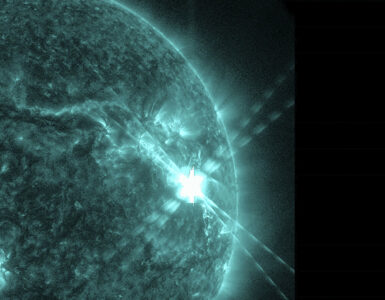by Rhodilee Jean Dolor
On March 9, a two-stage SpaceX Falcon 9 rocket launched 48 Starlink satellites into orbit from Cape Canaveral Space Force Station. This was its second attempt in as many months, but February’s launch was not as successful. February’s batch known as Group 4-7 was supposed to join a constellation of over 1,800 satellites that are now orbiting Earth to deliver high-speed internet service from space. However, the deployment did not go smoothly because of a geomagnetic storm that occurred a day after the fleet was launched.
What is a Geomagnetic Storm?
NASA’s Space Weather Prediction Center (SWPC) describes the phenomenon as a major disturbance on the magnetosphere, the region surrounding the Earth that is dominated by the magnetic field of the planet.
The phenomenon may happen as a result of solar storm, which occurs when the sun emits a burst of energy in the form of solar flares and coronal mass ejections. The surge of solar wind can cause charged particles from the sun to smash into the Earth’s magnetic field, causing major changes in the currents, plasmas, and fields in the magnetosphere.
The SWPC said that geomagnetic storms warm and increase density in the Earth’s upper atmosphere, which can cause a problem for orbiting spacecraft.
“During storms, the currents in the ionosphere, as well as the energetic particles that precipitate into the ionosphere add energy in the form of heat that can increase the density and distribution of density in the upper atmosphere, causing extra drag on satellites in low-earth orbit.,” the SWPC explained.
Setback To SpaceX’s Starlink Program
According to SpaceX, the geomagnetic storm that occured in early February made the atmosphere denser and increased drag on the newly launched satellites.
In a statement, the company said that the storm essentially doomed the majority of the fleet.
“The satellites deployed on Thursday were significantly impacted by a geomagnetic storm… These storms cause the atmosphere to warm and atmospheric density at our low deployment altitudes to increase. In fact, onboard GPS suggests the escalation speed and severity of the storm caused atmospheric drag to increase up to 50 percent higher than during previous launches,” the company said.
SpaceX claimed that the ground controllers put the satellites into safe mode and flew them in a manner that would minimize the drag, but the atmosphere was too thick for the satellites to safely reach a higher and more stable orbit position.
“Preliminary analysis shows the increased drag at the low altitudes prevented the satellites from leaving safe-mode to begin orbit raising maneuvers, and up to 40 of the satellites will reenter or already have reentered the Earth’s atmosphere.”
According to Fortune, the price tag of each Starlink satellite is estimated to be between $250,000 and $500,000. Taking into account the cost of launching a SpaceX Falcon 9, which is around $30 million, Elon Musk’s company likely suffered a financial loss of around $50 million because of the storm.
The incident is also a setback to SpaceX’s program to install a constellation of as many as 42,000 orbiting Starlink satellites to beam high-speed internet to customers anywhere in the world.
The Geomagnetic Storm that Nearly Caused a Nuclear War
The doomed SpaceX satellites underscore the threats posed by geomagnetic storms.
Extreme space weather events are also known to burn instruments and detectors onboard spacecraft.
These magnetic disturbances can also pose risks to people and property on Earth. They may cause massive power outages, disrupt radio communications and satellite operations as well as damage power grids, which can cause massive blackouts in extreme cases.
“The local heating also creates strong horizontal variations in the ionospheric density that can modify the path of radio signals and create errors in the positioning information provided by GPS,” the SWPC said.
“While the storms create beautiful aurora, they also can disrupt navigation systems such as the Global Navigation Satellite System (GNSS) and create harmful geomagnetic induced currents (GICs) in the power grid and pipelines.”
A geomagnetic storm nearly even caused a nuclear war between the US and the Soviet Union in 1967.
During the Cold War, a geomagnetic storm disrupted America’s radar and radio communications. Believing that the Soviet Union jammed the radars designed to detect incoming missiles, the U.S Air Force prepared to attack with nuclear weapons. Fortunately, the information from a then nascent Solar Forecasting Center about the storm made it to the military officials on time.
“Had it not been for the fact that we had invested very early on in solar and geomagnetic storm observations and forecasting, the impact [of the storm] likely would have been much greater,” said space physicist Delores Knipp, from the University of Colorado Boulder, who is lead author of a 2016 paper that detailed the incident. “This was a lesson learned in how important it is to be prepared.”
Buffering the Impacts of Damaging Space Weather
The occurrence of geomagnetic storms may be beyond human control, but thanks to advances in space science, buffers are now in place to minimize damage from these events.
NASA’s Advanced Composition Explorer, which was launched in 1997, now provides space weather reports and warnings of geomagnetic storms. Shutting down satellites and power grids based on data from the mission may reduce the damaging effects of a storm.
Power companies are also adopting safety measures such as the installation of tripwires to prevent massive blackouts during a geomagnetic event.
Researchers, however, acknowledge that there’s still a long way to go and more so because of the possibility of powerful storms.
Jeffrey Love, from the United States Geological Survey, who co-authored a study on the 1921 New York Railroad Storm, the most intense geomagnetic storm of the 20th century, told Scientific American in 2019 of what he expects if a similarly intense event happens in this age.
“If the 1921 storm occurred today, there would be widespread interference to multiple technological systems, and it would be quite significant,” he said. “I’m not going to say it would be the end of the world, but I can say with high confidence that there would be widespread disruption.”
Despite the risks, mankind continues to push forward.









